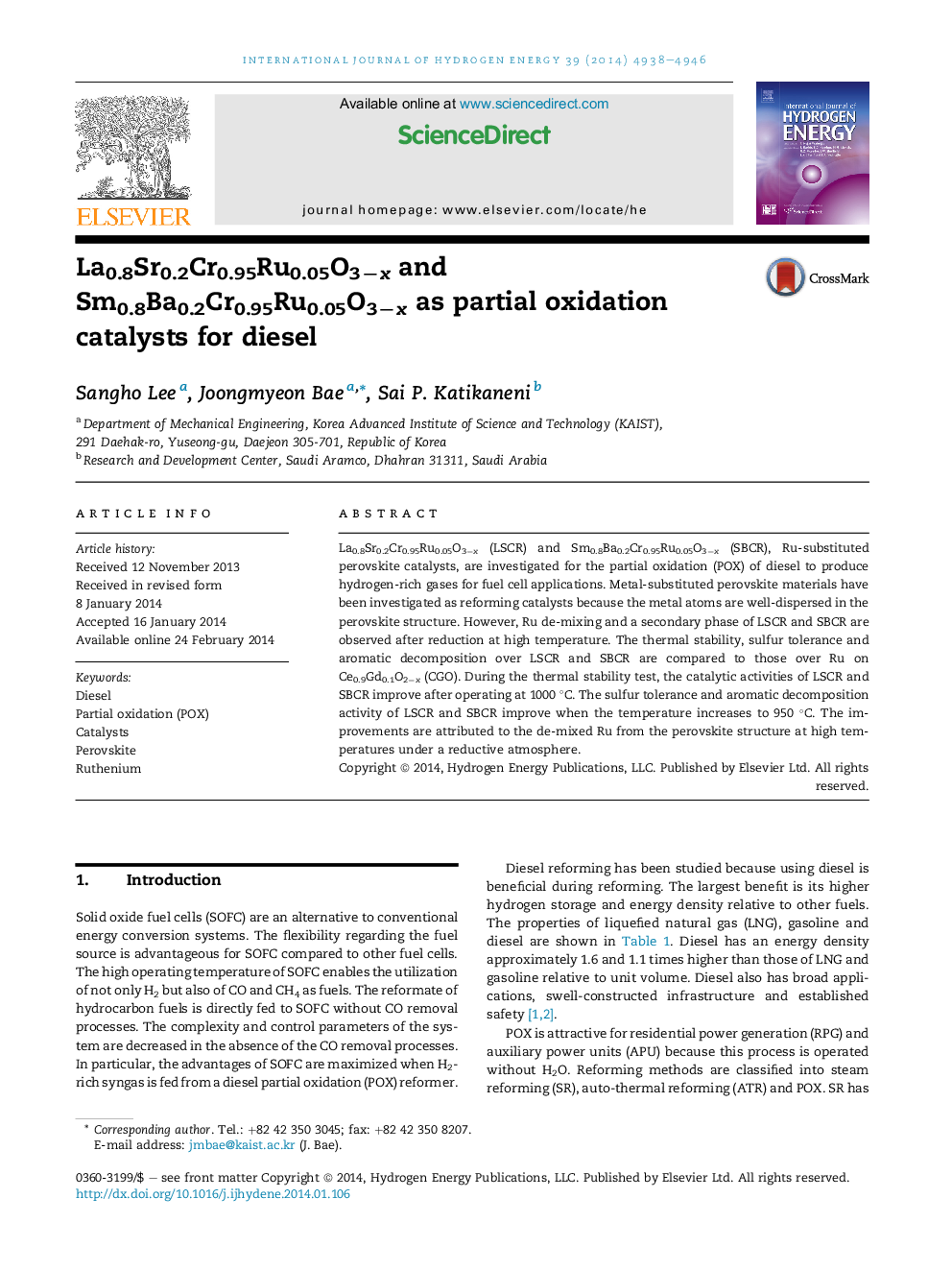| Article ID | Journal | Published Year | Pages | File Type |
|---|---|---|---|---|
| 1281260 | International Journal of Hydrogen Energy | 2014 | 9 Pages |
•Ru-substituted perovskites are investigated for the partial oxidation of diesel.•La0.8Sr0.2Cr0.95Ru0.05O3−x (LSCR) and Sm0.8Ba0.2Cr0.95Ru0.05O3−x (SBCR) are examined.•Ru is de-mixed from LSCR and SBCR after reduction at high temperature.•The catalytic activities of LSCR and SBCR improve after operating at 1000 °C.•The improvements are attributed to the de-mixed Ru from the perovskite structure.
La0.8Sr0.2Cr0.95Ru0.05O3−x (LSCR) and Sm0.8Ba0.2Cr0.95Ru0.05O3−x (SBCR), Ru-substituted perovskite catalysts, are investigated for the partial oxidation (POX) of diesel to produce hydrogen-rich gases for fuel cell applications. Metal-substituted perovskite materials have been investigated as reforming catalysts because the metal atoms are well-dispersed in the perovskite structure. However, Ru de-mixing and a secondary phase of LSCR and SBCR are observed after reduction at high temperature. The thermal stability, sulfur tolerance and aromatic decomposition over LSCR and SBCR are compared to those over Ru on Ce0.9Gd0.1O2−x (CGO). During the thermal stability test, the catalytic activities of LSCR and SBCR improve after operating at 1000 °C. The sulfur tolerance and aromatic decomposition activity of LSCR and SBCR improve when the temperature increases to 950 °C. The improvements are attributed to the de-mixed Ru from the perovskite structure at high temperatures under a reductive atmosphere.
Graphical abstractFigure optionsDownload full-size imageDownload as PowerPoint slide
